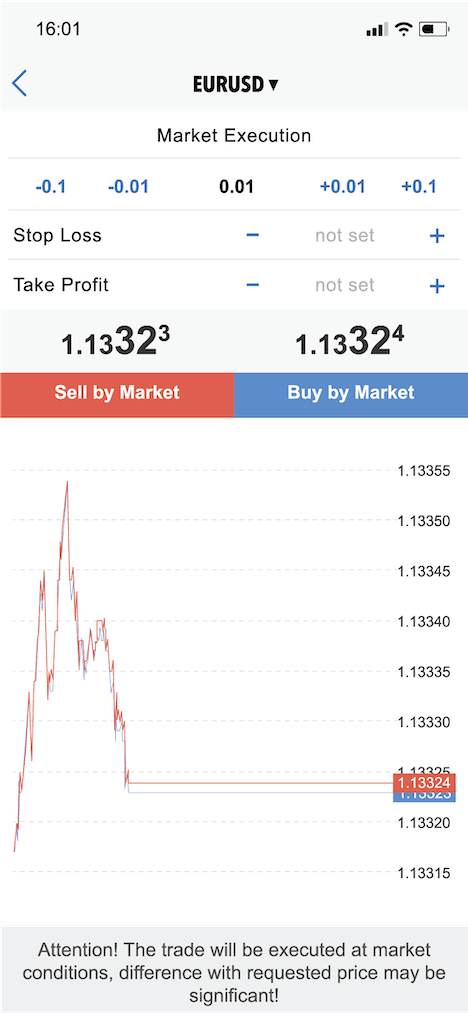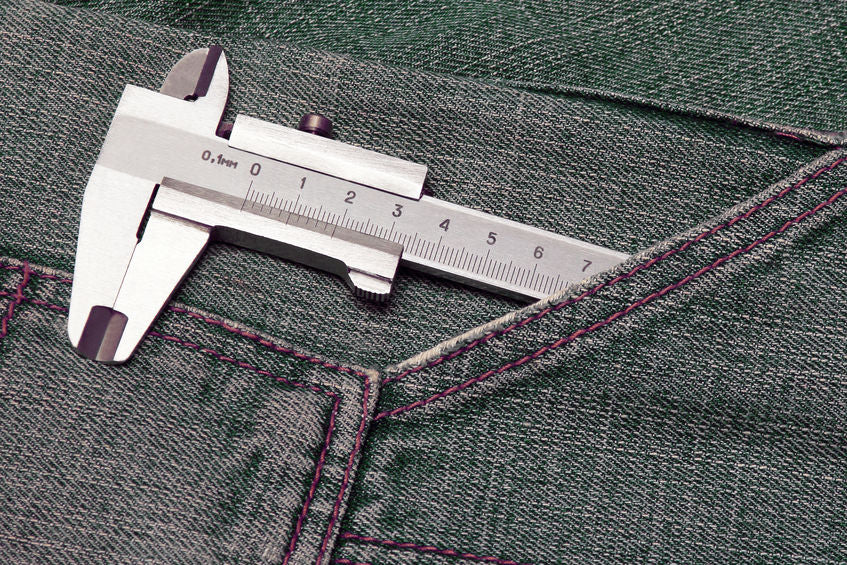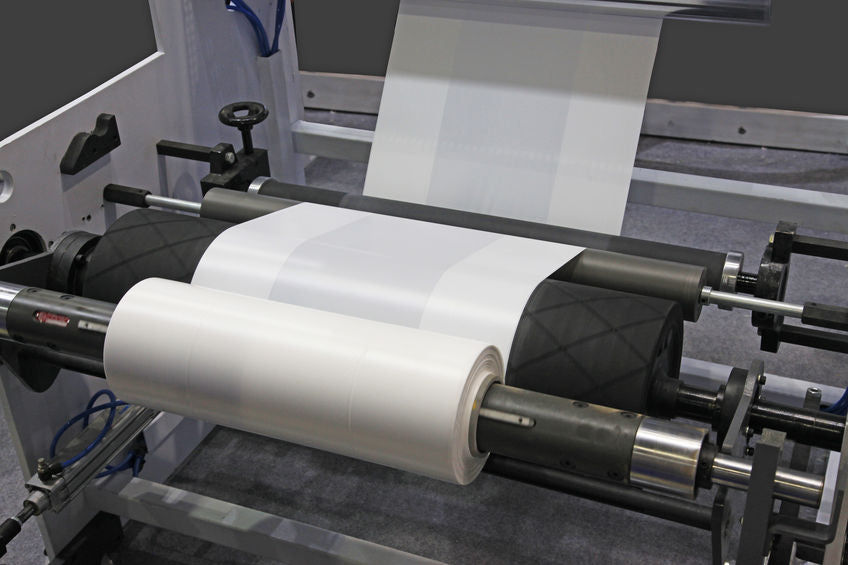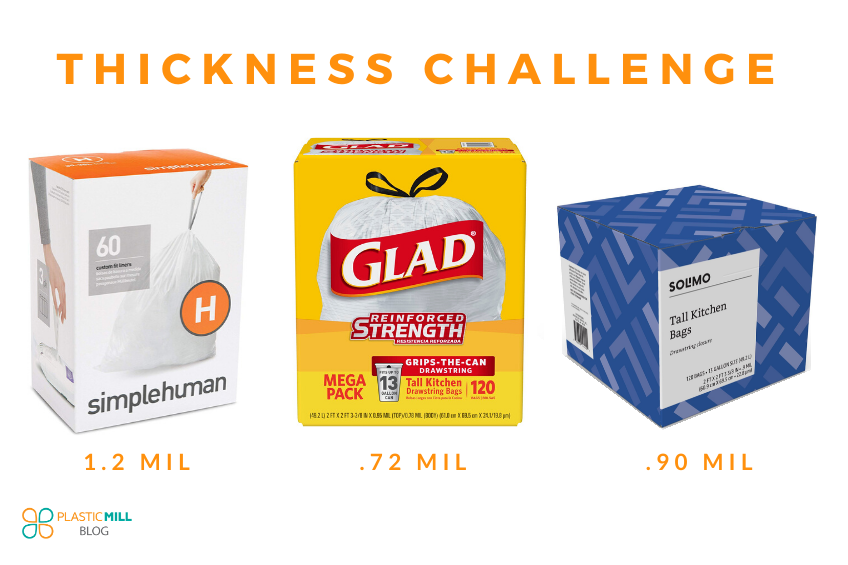MetaTrader 4 (MT4) Platform, thick mill.
Thick mill
Clients must be at least 18 years old to use the services of tickmill. High risk warning: trading contracts for difference (cfds) on margin carries a high level of risk and may not be suitable for all investors.
Top forex bonus promo
Before deciding to trade contracts for difference (cfds), you should carefully consider your trading objectives, level of experience and risk appetite. It is possible for you to sustain losses that exceed your invested capital and therefore you should not deposit money that you cannot afford to lose. Please ensure you fully understand the risks and take appropriate care to manage your risk.
Metatrader 4
(MT4) platform
Tickmill’s MT4 platform is fully customisable and designed to give you that trading edge.
Why trade with tickmill’s
metatrader 4?

Designed specifically for traders, our metatrader 4 platform provides a user-friendly and highly customisable interface, accompanied by sophisticated order management tools help you control your positions quickly and efficiently.
MT4 is widely recognised as the world’s favorite forex trading platform. It offers an easy-to-use user interface, enhanced charting functionality, indicators and supports MQL language. So, you can easily program indicators and expert advisors (eas) to trade the forex market 24/5 with no intervention needed from your side.
Combined with tickmill’s enhanced trading conditions, you’re able to use a globally recognised trading platform accompanied by spreads from 0 pips and 0.20s execution.
Key features of MT4
cfds on forex, stock indices, commodities and bonds. Execute your order with no partial fills, as a result of our huge depth of liquidity. EA trading facilities by using our VPS services. Advanced technical analysis, 50+ indicators and customisable charting… in 39 languages. Trading signals with an advanced notification system.

User manuals
START TRADING with tickmill
It's simple and fast to join!
REGISTER
Complete registration, log in to your client area and upload the required documents.
CREATE AN ACCOUNT
Once your documents are approved, create a live trading account.
MAKE A DEPOSIT
Select a payment method, fund your trading account and start trading.
TRADE
Launch the platform, enter tickmill’s server name to log in and start trading!
TRADING INSTRUMENTS
TRADING CONDITIONS
Forex & cfds
TRADING ACCOUNTS
PLATFORMS
EDUCATION
TOOLS
PARTNERSHIPS
PROMOTIONS
ABOUT US
SUPPORT
Tickmill is the trading name of tickmill group of companies.
Tickmill.Com is owned and operated within the tickmill group of companies. Tickmill group consists of tickmill UK ltd, regulated by the financial conduct authority (registered office: 3rd floor, 27 - 32 old jewry, london EC2R 8DQ, england), tickmill europe ltd, regulated by the cyprus securities and exchange commission (registered office: kedron 9, mesa geitonia, 4004 limassol, cyprus), tickmill south africa (pty) ltd, FSP 49464, regulated by the financial sector conduct authority (FSCA) (registered office: the colosseum, 1st floor, century way, office 10, century city, 7441, cape town), tickmill ltd, regulated by the financial services authority of seychelles and its 100% owned subsidiary procard global ltd, UK registration number 09369927 (registered office: 3rd floor, 27 - 32 old jewry, london EC2R 8DQ, england), tickmill asia ltd - regulated by the financial services authority of labuan malaysia (license number: MB/18/0028 and registered office: unit B, lot 49, 1st floor, block F, lazenda warehouse 3, jalan ranca-ranca, 87000 F.T. Labuan, malaysia).
Clients must be at least 18 years old to use the services of tickmill.
High risk warning: trading contracts for difference (cfds) on margin carries a high level of risk and may not be suitable for all investors. Before deciding to trade contracts for difference (cfds), you should carefully consider your trading objectives, level of experience and risk appetite. It is possible for you to sustain losses that exceed your invested capital and therefore you should not deposit money that you cannot afford to lose. Please ensure you fully understand the risks and take appropriate care to manage your risk.
The site contains links to websites controlled or offered by third parties. Tickmill has not reviewed and hereby disclaims responsibility for any information or materials posted at any of the sites linked to this site. By creating a link to a third party website, tickmill does not endorse or recommend any products or services offered on that website. The information contained on this site is intended for information purposes only. Therefore, it should not be regarded as an offer or solicitation to any person in any jurisdiction in which such an offer or solicitation is not authorised or to any person to whom it would be unlawful to make such an offer or solicitation, nor regarded as recommendation to buy, sell or otherwise deal with any particular currency or precious metal trade. If you are not sure about your local currency and spot metals trading regulations, then you should leave this site immediately.
You are strongly advised to obtain independent financial, legal and tax advice before proceeding with any currency or spot metals trade. Nothing in this site should be read or construed as constituting advice on the part of tickmill or any of its affiliates, directors, officers or employees.
The services of tickmill and the information on this site are not directed at citizens/residents of the united states, and are not intended for distribution to, or use by, any person in any country or jurisdiction where such distribution or use would be contrary to local law or regulation.
Bag thickness standards: what is a mil?
Most bag bans regulate the thickness of bag materials in mils. The problem is: most of us don’t know what is a mil. If you’re an engineer, you probably know what a mil is, but the rest of us need some help.
So, what is a mil? A mil is a thousandth of an inch. Generally, measurements of less than 1/8 of an inch are too small to see, but often we can feel them.
California has set the legal standard for a plastic film bag at 2.25 mil. Some cities allow bags a little thinner, and others require bags to be a little smaller, but more bans have this measurement than any other thickness.
Plastic fabric bags are not normally measured in mils but in GSM. Learn more about GSM here. Only plastic film bags, made with plastic sheeting that does not breathe, is so thin that mils become an appropriate measurement. In california, the minimum weight for fabric bags is 80 GSM.
To give you a tactile sense of how measurements in mils can be useful, here are some ordinary objects and their measurement in mils.
Thickness measured in mils
Bags of 2.25 mil are technically reusable, but few people reuse them. A study by save our shores surveyed shoppers in monterey CA county, after a bag ban had been implemented. Out of the 740 shoppers questioned, only 4 had reused a bag of that thickness. Save our shores and other groups are advocating that bags be at least 4 mils in order to be classified as reusable.
Bag bans are new and as more information comes in about how regulations affect consumers and stores, modifications are likely to be forthcoming. You can always call 1 bag at a time for a quote on our wholesale shopping bags and ask us to check your local bag laws to make sure our products are in compliance.
Understanding trash bag thickness
Posted by vivian mcneil on jan 09, 2020
There are so many trash bags types to choose from. How should one be able to understand what type of thickness they really need? Many individuals will purchase a set of trash bags without even thinking into it if these are right for me. Then you have the homeowners who have been buying a box of black garbage bags just because that’s what their mother did. Meanwhile, the bag is constantly slipping when a heavy piece of trash finds a home in the receptacle. At that point, whichever party in the kitchen feels responsible enough for the kitchen garbage can, will try and locate the two sides of the bag and attempt to bring it over the bin lip. They will then hope and pray that the lid will hold it in place and prevent it from slipping in again. Of course, that’s all until the next resident of the home needs to scrape their plate off from supper and there it goes again, into the trash bin. Finally, the trash bag is full and lifted out of the bin, all the trash sinks to the bottom which creates a significant air cavity on top. This will quickly fill up your outdoor trash can days before the local sanitation service picks it up.

Common frustrations like these can be avoided if both residential and commercial garbage bag consumers understand garbage bag types. By comprehending trash bag capacity and thickness you will be able to get the right type of trash bag the first time, and not get stuck with hundreds of bags that don’t fit your business or household needs.
What material is used to create a plastic garbage bag?
Before getting into the types of thickness and perhaps density, we need to first get a clear picture of how plastic trash bags are made. The commonality between most garbage bags is that they are made from polyethylene resin. The polyethylene film is made of extruding molten resins through a dye to create a bubble. Once this step is complete, the film will then be flattened and passed through many rollers until it cools down and is ready to be cut and boxed for distribution. The main ingredient, resin can come in two forms, processed resin and virgin resin. It’s possible that a thinner bag made of virgin resin might be able to outperform a thicker bag made of processed resin. In order to gain equal strength between both bag types, a significant amount of processed resin will be necessary, more than those bags made from virgin resin. It’s quite clear, virgin resin outperforms processed resin.

How is trash bag thickness measured?
There are many ways to measure a garbage bag’s thickness, but the most common way is done by a micrometer. There are both manual and electric micrometers which are used to measure the bag’s thickness in mil. A mil is defined by dictionary.Com as follows; “A unit of length equal to 0.001 of one inch (0.0254 mm), used in measuring the diameter of wires”. It’s a very small metric but can make the biggest difference when choosing a garbage bag. When the manufacturer measures the bag’s thickness, they take a micrometer and place the plastic between the two external jaws. The micrometer will then compute the measurement in mils.
Contractors that are transporting trash that’s heavy and possibly sharp, will want to shop for a high-density thick trash bag. Many contractor garbage bags can be thin and tear when handling heavy duty trash. For a household, fall cleanup, and other light trash, thickness might not be that important and a .82 mil bag should suffice. If your tall kitchen trash bag is not holding up, try looking for a higher mil trash bag. Once you find the right bag that works for you, stock up and buy a big box of these trash bags. People tend to take a liking to the brand and stick with a specific garbage bag which works for them and their family. Commercial facilities will pretty much do the same and be consistent with the trash bags they choose to use.
The trash bag thickness guide
In order to dumb down this concept, we will provide a description for each trash bag thickness followed by a comprehensive table which you can easily identify the specific garbage bag you’re looking for. It may come in handy for a homeowner or facility manager who is looking for garbage bags which match the trash that’s being handled.
Trash bag thickness chart
| trash type | density | thickness range | mil or microns? | Can type |
|---|---|---|---|---|
| light | low | .30 - .49 | mil | for small cans |
| heavy duty | low | .75 - 1.2 | mil | for midsize cans |
| super heavy duty | low | 1.3 - 2.0 | mil | for larger cans |
High density vs low density trash bags
There are two main material types which are offered to consumers. High density trash bags will have a thin and flimsy feel while low density garbage bags will feel smoother and softer. More cost-effective trash liners will often come in a high-density plastic. This is important to notate, because most laymen think that high density is stronger than low density, and now you know that’s not the case. When looking for a durable trash bag that’s strong, resistant to puncturing and tearing you want to go with low density garbage bags. Always remember to stay low when looking for heavy duty garbage bags.
Trash bag thickness in mil and microns
Once you know what type of density bag you're looking for, there will be two metrics to look out for, mil and microns. As explained above, a mil is 0.001 of one inch while a micron is a millionth of a micrometer or better known to those in the united states as 0.00004 inches. The micron is a significantly smaller metric than that of the mil. Therefore, if one is looking for a thick, puncture resistant trash bag, they should make sure to look for a thickness in mil while if one is looking for a trash liner to collect shredding, a thickness in microns would suffice.

Standard trash bag thickness
Since many homeowners are purchasing tall kitchen trash bags, we will choose three trash bags on amazon that had at least a 4.5 star rating, with 5,000+ reviews (the fact that there were 5,000+ reviews shows us that a good portion of the homes in the united states use these bags). The simplehuman® code H trash bag, holds 30 to 35 liters of trash and claims to be thick. With its 11,000+ reviews we could not locate the thickness measurement but found it on home depot, measuring at 1.2 mil. The next trash bag, with 6000+ reviews was the glad tall kitchen drawstring trash bags. It holds 13 gallons of kitchen trash and has a .72 mil thickness. The final garbage bag was amazon's own brand, with 5000+ reviews, the solimo tall kitchen drawstring trash bags. It holds 13 gallons of kitchen trash and has a .9 mil thickness. There are many high quality brands which offer the same codes, thickness, and low density as simplehuman® for less.

Upon review of the above three bags we can determine that the standard garbage bag thickness for tall kitchen trash bags ranges from .72 to 1.2 mil. Anything lower might be subject to puncturing, tearing, and leaving you with a big mess. Keep in mind that even though the trash bag made it from the kitchen to the outdoor trash can, it may not make it from the trash receptacle to the garbage truck. Did you ever see how those strong garbage men yank out those bags? They might take the bag but leave the trash behind.
White vs. Black garbage bags
There are claims that the chemical make-up of white garbage bags is from virgin resin and stronger while chemical make-up of black garbage bags may come from recycled plastic. This plastic is broken down and remade into resin type of plastic which can be reproduced into black trash bags. The deep black color gives more flexibility of placing other elements into the compound. Another advantage of using white garbage bags is that they are food grade and prevent food contamination. Black trash bags, on the other hand are not food grade and are susceptible to contamination.
Final words
There are many specifications in the trash bag or trash liner you choose. It’s important for the consumer to first identify what content will be placed in the trash bag. When disposing lighter items, thickness in density might not make that much of a difference. On the other hand, a kitchen trash receptacle might contain sharp items like plastic forks, aluminum pans, and other puncturable trash. You then want to make sure that your bag thickness is low density, and measures somewhere between .72 and 1.2 mil. If you wish to not get so technical and don’t care for microns or mils, it will be trial and error. Just make sure that when you are trying out a new trash bag not to purchase such a big box. You don’t want to get stuck with a big box of high-density trash bags that puncture and tear easily. What you are looking for is a garbage bag that is not trash.
Forensic officers comb woodland for clues after body found near leafy trafford village
A 19-year-old man is being questioned on suspicion of murder
Forensic officers are combing woodland for clues after a body was found near a leafy trafford village.
A murder investigation was launched after the grim discovery was made on ashley mill lane in ashley, cheshire - near the border with neighbouring hale - early on friday morning (december 13).
Detectives say the person has not yet been identified.
Cheshire police confirmed that a 19-year-old man, from knutsford, was arrested on friday and was detained on suspicion of murder.
He was quizzed by detectives in custody.
In a statement, the force said: "at 7.52am on friday, december 13, police received a report of a body found on ashley mill lane in ashley.

"officers are working to establish the circumstances surrounding the death and the identification of the individual."
A police cordon remained in place near a farm on saturday morning (december 14) while investigators worked at the scene.

Forensic officers combed through a large woodland area for clues.
Police dogs were also being used at the scene to search the area.

A section of the road off ashley mill lane - which runs through an area of fields and thick woodland - remains closed off.

The cheshire village sits below hale and bowdon in neighbouring trafford.
No other details about the incident have been released yet by police.
Get breaking news first on the free manchester evening news app - download it here for your apple or android device. You can also get a round-up of the biggest stories sent direct to your inbox every day with the MEN email newsletter - subscribe here . And you can follow us on facebook here .
Mils to inches
Convert from mils to inches. Type in the amount you want to convert and press the convert button.
- Mil mils to angstroms Å
- Å angstroms to mils mil
- Mil mils to astronomical units au
- Au astronomical units to mils mil
- Mil mils to centimetres cm
- Cm centimetres to mils mil
- Mil mils to decimetres dm
- Dm decimetres to mils mil
- Mil mils to feet ft
- Ft feet to mils mil
- Mil mils to inches in
- In inches to mils mil
- Mil mils to kilometres km
- Km kilometres to mils mil
- Mil mils to light years ly
- Ly light years to mils mil
- Mil mils to meters m
- M meters to mils mil
- Mil mils to miles mi
- Mi miles to mils mil
- Mil mils to millimetres mm
- Mm millimetres to mils mil
- Mil mils to nanometres nm
- Nm nanometres to mils mil
- Mil mils to nautical miles nmi
- Nmi nautical miles to mils mil
- Mil mils to parsec pc
- Pc parsec to mils mil
- Mil mils to yards yd
- Yd yards to mils mil
- Mil mils to micrometres μm
- Μm micrometres to mils mil
- Mil mils to rods —
- — rods to mils mil
- Mil mils to leagues —
- — leagues to mils mil
- Mil mils to furlongs —
- — furlongs to mils mil
- Mil mils to fathom —
- — fathom to mils mil
| 1 mils = 0.001 inches | 10 mils = 0.01 inches | 2500 mils = 2.5 inches |
| 2 mils = 0.002 inches | 20 mils = 0.02 inches | 5000 mils = 5 inches |
| 3 mils = 0.003 inches | 30 mils = 0.03 inches | 10000 mils = 10 inches |
| 4 mils = 0.004 inches | 40 mils = 0.04 inches | 25000 mils = 25 inches |
| 5 mils = 0.005 inches | 50 mils = 0.05 inches | 50000 mils = 50 inches |
| 6 mils = 0.006 inches | 100 mils = 0.1 inches | 100000 mils = 100 inches |
| 7 mils = 0.007 inches | 250 mils = 0.25 inches | 250000 mils = 250 inches |
| 8 mils = 0.008 inches | 500 mils = 0.5 inches | 500000 mils = 500 inches |
| 9 mils = 0.009 inches | 1000 mils = 1 inches | 1000000 mils = 1000 inches |
Embed this unit converter in your page or blog, by copying the following HTML code:
Mils to millimeters converter
This page allows you to convert length values expressed in mils to their equivalent in millimeters.
Enter the value in mils in the top field (the one marked "mil"), then press the "convert" button or the "enter" key. The converter also works the other way round: if you enter the value in millimeters in the "mm" field, the equivalent value in mils is calculated and displayed in the top field.
Mils to millimeters conversion formula
Where Lmils is the length in mils and Lmillimeters is its equivalent in millimeters.
The mil is a unit of measure typically used in manufacturing and engineering for describing distance tolerances with high precision or for specifying the thickness of materials. One mil is equal to one thousandth of an inch, or 10 -3 inches.
The mil is also referred to as thou.
The closest unit to the mil in the metric system is the micrometer: one mil is equal to 25.4 µm.
Millimeter
One millimeter, in the metric system, is equivalent to 1/1000 (one thousandth) of a meter. 1 mm = 10 -3 m.
It is used to describe lengths that are relatively small, like the widths of pipes, cables or connectors. The well known terms 8mm, 16mm and 32mm describe common widths of motion picture films.
To understand the approximate size of one millimeter, see this tiny red line:
Mils to inches
Convert from mils to inches. Type in the amount you want to convert and press the convert button.
- Mil mils to angstroms Å
- Å angstroms to mils mil
- Mil mils to astronomical units au
- Au astronomical units to mils mil
- Mil mils to centimetres cm
- Cm centimetres to mils mil
- Mil mils to decimetres dm
- Dm decimetres to mils mil
- Mil mils to feet ft
- Ft feet to mils mil
- Mil mils to inches in
- In inches to mils mil
- Mil mils to kilometres km
- Km kilometres to mils mil
- Mil mils to light years ly
- Ly light years to mils mil
- Mil mils to meters m
- M meters to mils mil
- Mil mils to miles mi
- Mi miles to mils mil
- Mil mils to millimetres mm
- Mm millimetres to mils mil
- Mil mils to nanometres nm
- Nm nanometres to mils mil
- Mil mils to nautical miles nmi
- Nmi nautical miles to mils mil
- Mil mils to parsec pc
- Pc parsec to mils mil
- Mil mils to yards yd
- Yd yards to mils mil
- Mil mils to micrometres μm
- Μm micrometres to mils mil
- Mil mils to rods —
- — rods to mils mil
- Mil mils to leagues —
- — leagues to mils mil
- Mil mils to furlongs —
- — furlongs to mils mil
- Mil mils to fathom —
- — fathom to mils mil
| 1 mils = 0.001 inches | 10 mils = 0.01 inches | 2500 mils = 2.5 inches |
| 2 mils = 0.002 inches | 20 mils = 0.02 inches | 5000 mils = 5 inches |
| 3 mils = 0.003 inches | 30 mils = 0.03 inches | 10000 mils = 10 inches |
| 4 mils = 0.004 inches | 40 mils = 0.04 inches | 25000 mils = 25 inches |
| 5 mils = 0.005 inches | 50 mils = 0.05 inches | 50000 mils = 50 inches |
| 6 mils = 0.006 inches | 100 mils = 0.1 inches | 100000 mils = 100 inches |
| 7 mils = 0.007 inches | 250 mils = 0.25 inches | 250000 mils = 250 inches |
| 8 mils = 0.008 inches | 500 mils = 0.5 inches | 500000 mils = 500 inches |
| 9 mils = 0.009 inches | 1000 mils = 1 inches | 1000000 mils = 1000 inches |
Embed this unit converter in your page or blog, by copying the following HTML code:
Woodpeckers slab flattening mill

Woodpeckers slab flattening mill guides your router over your slab in a controlled plane. Since you’re using a router instead of a planer-style cutterhead, tear-out is minimal…the surface will only need light sanding afterwards. The slab flattening mill starts with two aluminum extrusions. The inverted “V” shape of these main rails sheds sawdust and provides a solid base for the mating extrusion. The second extrusion fits over the inverted “V” and glides on UHMW polyethylene runners. Simply mount the mill to any flat and level work surface…even a sheet of MDF on a pair of sawhorses. When you’re done, the modular design stores conveniently.
We now offer the slab flattening mill in 4 sizes to accommodate the needs of every slab woodworker. If you’re tight on shop space and are planning to do end-grain cutting boards and end table sized slabs, our smallest slab flattening mill will handle work up to 24" x 24". If you need more length, there’s the 24" x 48". The basic slab flattening mill accommodates slabs up to 38” x 57”. The extended slab flattening mill adds an additional pair of 72" rails that can either replace the cross rails to increase width, or connect with the base rails to extend length. The capacity grows to either 62” x 105” or 38” x 129”. These huge capacities are great…when you need them. Remember, though, you can always mount the rails closer together when it suits your project. See the chart in the photos for a guide to all the maximum size configurations. All sizes of the slab flattening mill can accommodate stock up to 3-7/16" in thickness. If your stock is thicker than that, you can use shop-made spacers to raise the slab flattening mill. Conversely, if you are dealing with thin stock, you can use the same approach on the underside of your thin stock. Since all routers vary in height capacity and router bits vary in overall length, you may need to elevate your stock or elevate the mill in order to achieve the desired results of the slab flattening mill.
Using the slab flattening mill is as easy as sliding your router across the slab and back, moving over a little less than the width of your cutter and repeating until you’re done. It works best with a variable speed router of 2 horsepower or more. You’ll get done sooner if you stick to a large diameter spoil board style bit. We’ve done some of the shopping for you and offer a couple of suggested router bits. One is an economical brazed carbide bit from whiteside. The second one, from amana, features reversible/replaceable carbide inserts so you can always have sharp edges.
This process produces lots of shavings. Our new optional dust collection port bolts to the carriage and rides along right beside the exit point of the shavings. It works with either shop vacuums or larger dust collectors. A brush surrounds the pick-up area, trapping the shavings equally well on smooth or uneven slab surfaces. Mounts to the carriage with 6 simple screws, replacing the carriage end-stops. This will retro-fit to any woodpeckers slab flattening mill, regardless of when you bought it.
Don’t put off that natural edge project you’ve been dreaming about any longer. Order your woodpeckers slab flattening mill today!
WHAT'S A MIL?

Aside from the dimensions of the bag, the mil thickness is another critical component in selecting the right plastic bag for your needs.
A mil is a unit of measurement used to measure the thickness of film in thousands of an inch; 1 mil = 1/1000 inch. While simple in principle, it's very hard to visualize 1/1000 of an inch. Look around; is there anything that you can relate to 1/1000 of an inch? For example, paper is about 9 mils and a human hair is about 2/1000 of an inch or 2 mils, but try visualizing two hairs stacked upon each other as a 4 mil bag. This is where most people get lost; there are few things that we understand as being 1/1000 of an inch.
Mils are sometimes listed in decimal as thousands of an inch; a 2 mil bag may be listed as .002. To convert the decimal to actual mils, simply shift the decimal over by three, .004 to 4 mils.
Choosing the right mil thickness
How thick of a mil needed is dependent on the application. If you're product is heavy or has sharp corners, it would be a wiser choice to go with a heavier gauge than lighter. Vice versa, you would not want to place food items; fruits, vegetables, etc… in a 6 mil bag. Keep in mind that the clarity of a bag is affected by the thickness. A 4 mil bag would not be a clear as a 1 mil bag.
The best way to understand the thickness of a mil is to use some perspective. Here are some common everyday bags and their associated mil thicknesses:
WHAT'S A MIL?

Aside from the dimensions of the bag, the mil thickness is another critical component in selecting the right plastic bag for your needs.
A mil is a unit of measurement used to measure the thickness of film in thousands of an inch; 1 mil = 1/1000 inch. While simple in principle, it's very hard to visualize 1/1000 of an inch. Look around; is there anything that you can relate to 1/1000 of an inch? For example, paper is about 9 mils and a human hair is about 2/1000 of an inch or 2 mils, but try visualizing two hairs stacked upon each other as a 4 mil bag. This is where most people get lost; there are few things that we understand as being 1/1000 of an inch.
Mils are sometimes listed in decimal as thousands of an inch; a 2 mil bag may be listed as .002. To convert the decimal to actual mils, simply shift the decimal over by three, .004 to 4 mils.
Choosing the right mil thickness
How thick of a mil needed is dependent on the application. If you're product is heavy or has sharp corners, it would be a wiser choice to go with a heavier gauge than lighter. Vice versa, you would not want to place food items; fruits, vegetables, etc… in a 6 mil bag. Keep in mind that the clarity of a bag is affected by the thickness. A 4 mil bag would not be a clear as a 1 mil bag.
The best way to understand the thickness of a mil is to use some perspective. Here are some common everyday bags and their associated mil thicknesses:
so, let's see, what we have: download metatrader 4 for PC, mac, android and IOS and trade with an award winning trading platform. Open your MT4 demo account today with tickmill at thick mill
Contents of the article
- Top forex bonus promo
- Metatrader 4 (MT4) platform
- Why trade with tickmill’s metatrader...
- Key features of MT4
- User manuals
- START TRADING with tickmill
- It's simple and fast to join!
- REGISTER
- CREATE AN ACCOUNT
- MAKE A DEPOSIT
- TRADE
- TRADING INSTRUMENTS
- TRADING CONDITIONS
- Forex & cfds
- TRADING ACCOUNTS
- PLATFORMS
- EDUCATION
- TOOLS
- PARTNERSHIPS
- PROMOTIONS
- ABOUT US
- SUPPORT
- It's simple and fast to join!
- Bag thickness standards: what is a mil?
- Understanding trash bag thickness
- Trash bag thickness chart
- Forensic officers comb woodland for clues after body found...
- Mils to inches
- Mils to millimeters converter
- Mils to inches
- Woodpeckers slab flattening mill
- WHAT'S A MIL?
- WHAT'S A MIL?
Comments
Post a Comment